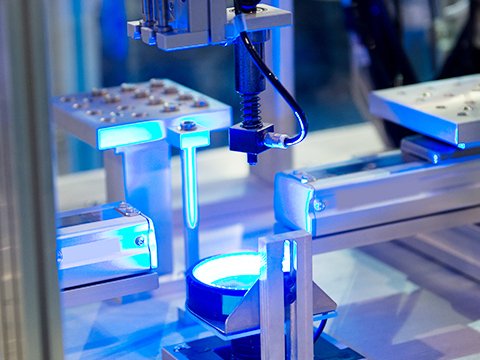Why AOI Should Be Combined With AI
Introduction to AI + AOI
AI and AOI are two transformative technologies that have reshaped industries worldwide. On their own, each technology has demonstrated significant value in enhancing efficiency, productivity, and quality control. Yet, when combined, their synergy unlocks even greater potential for industrial users. In this article, we’ll explore why the integration of AOI with AI is a game-changer and the enhanced benefits it can bring to your inspection procedures.
What is AI?
Artificial Intelligence (AI) refers to the technology that enables machines to perform tasks traditionally requiring human intelligence. These tasks include pattern recognition, decision-making, and problem-solving. AI systems are capable of learning from data, continuously refining their performance and accuracy. This ability to adapt makes AI particularly valuable across industries, including manufacturing, where it can drive improvements in efficiency, precision, and overall productivity.
What is AOI?
Automated Optical Inspection (AOI) is a technology that employs high-resolution cameras and advanced image-processing software to inspect and analyze manufacturing items, including electronic components and printed circuit boards (PCBs). AOI systems are designed to detect a range of defects, such as missing components, incorrect component placement, and soldering errors, ensuring that products meet quality standards before they proceed further down the production line.
Key Benefits of Combining AOI and AI
The integration of AOI and AI offers a multitude of advantages, driving operational improvements across industries. Below are four key benefits of combining these powerful technologies:
Enhanced Efficiency and Increased Productivity
AOI systems can swiftly scan and analyze large volumes of components, while AI learns from data to enhance the accuracy and consistency of the inspection process. This combination reduces inspection time, boosts overall productivity, and helps manufacturers respond more swiftly to customer demands.
Increased Accuracy
While AOI systems are effective at detecting defects, they can occasionally produce false positives or miss subtle flaws. When paired with AI vision software, the inspection process becomes significantly more accurate. AI-driven vision systems analyze past inspection data to identify patterns, continuously refining the detection process and improving precision over time.
Cost Reduction
Automating inspections through the integration of AOI and AI reduces the need for manual labor, leading to significant savings in labor costs. Traditional inspection methods are time-consuming and labor-intensive, but automation allows companies to streamline the process. Additionally, by catching defects earlier, automated inspections help mitigate costs related to product recalls, warranty claims, and rework.
Improved Quality Control
Early defect detection is crucial for maintaining high-quality standards. The combined power of AOI and AI enables more comprehensive inspections than manual methods, ensuring that only products meeting rigorous quality standards make it to the customer. This early detection minimizes the risk of defective products reaching the market, protecting both brand reputation and customer satisfaction.
AI + AOI Summary
Integrating AOI with AI improves manufacturing operations by combining fast inspection with intelligent learning. AOI handles large-scale analysis, while AI refines accuracy and adapts over time. This combination reduces costs, increases precision, and strengthens quality control, allowing manufacturers to improve productivity and minimize defects. Together, AOI and AI provide a more efficient and reliable inspection process, benefiting both operational performance and product quality.

AI + AOI FAQs
What is the difference between AOI and AI?
AOI is a technology that uses cameras and image-processing software to inspect and analyze items, while AI is a broader field that enables machines to perform tasks that typically require human intelligence, such as pattern recognition and decision-making.
What are the benefits of using AI in AOI?
Integrating AI into AOI enhances the accuracy and efficiency of automated inspection processes. AI vision solutions enable systems to learn from data, detect subtle defects, and continuously improve over time, addressing challenges that traditional AOI methods might miss.
How does AI improve the accuracy of AOI?
AI improves AOI accuracy by allowing machines to learn from past inspection data and identify complex patterns in defects. Over time, AI can adapt to changes in the inspection environment and refine its performance, resulting in higher precision.
Which industries use AOI + AI?
AOI and AI are widely used across industries such as manufacturing, electronics, semiconductors, automotive, and pharmaceuticals, where precise inspection and quality control are critical.